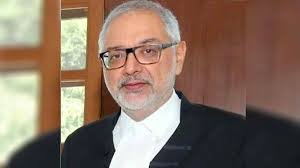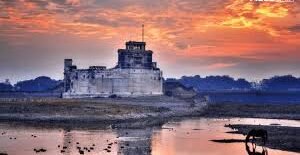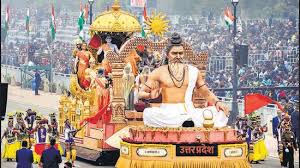Reviving the Oldset Public Mosque of Leh: A Historic Restoration Initiative
Introduction to the Oldset Public Mosque
The Oldset Public Mosque in Leh, a significant cultural and historical monument, is undergoing restoration to preserve its rich heritage. This mosque, built in 1666, serves not just as a place of worship but also as a testament to the architectural grandeur of the region. The mosque is noted for its intricate woodwork and traditional design, reflecting the unique blend of cultures in Ladakh.
Importance of the Restoration Project
The restoration project aims to revive the mosque’s historical significance while ensuring it meets modern safety and preservation standards. The initiative is backed by the Ministry of Culture and local authorities, demonstrating a commitment to protecting India’s diverse cultural heritage. This mosque not only serves the local Muslim community but also attracts tourists and researchers interested in the historical architecture of Ladakh.
Cultural Significance of the Mosque
The Oldset Public Mosque is not just a religious site; it is a cultural landmark that embodies the syncretism of Tibetan and Islamic traditions. Its preservation is crucial for maintaining the cultural identity of the region. By restoring the mosque, authorities aim to foster communal harmony and promote tourism, thereby benefiting the local economy.
Challenges in the Restoration Process
Restoring such an ancient structure comes with its challenges. The local authorities face difficulties in sourcing traditional materials and skilled artisans who can replicate the original craftsmanship. Moreover, the restoration must respect the historical authenticity of the mosque while incorporating necessary upgrades to ensure structural integrity.
Community Involvement in the Restoration
The restoration of the Oldset Public Mosque involves active participation from the local community. Residents, including craftsmen and historians, are contributing their knowledge and skills to the project. This collaborative effort highlights the importance of community in preserving cultural heritage and fosters a sense of ownership among the locals.

Why This News is Important
Preservation of Cultural Heritage
The restoration of the Oldset Public Mosque is crucial for preserving the cultural heritage of Leh. As a historical monument, it represents the rich tapestry of influences that have shaped the region’s identity over centuries. The mosque’s preservation ensures that future generations can appreciate and learn from this historical landmark.
Promoting Interfaith Harmony
By restoring a site that holds significance for the Muslim community in Leh, the project promotes interfaith harmony. It serves as a reminder of the region’s diverse cultural and religious landscape, fostering understanding and respect among different communities.
Economic Impact on the Local Community
The restoration project is expected to boost local tourism, which is vital for Leh’s economy. As the mosque becomes a more prominent tourist attraction, it will create job opportunities and stimulate local businesses, contributing to the region’s economic growth.
Educational Value
The Oldset Public Mosque is an educational resource that provides insights into the architectural and cultural history of Ladakh. The restoration project will allow scholars and students to study the mosque’s unique design and the historical context in which it was built, enhancing their understanding of the region’s heritage.
Government Commitment to Cultural Initiatives
This project underscores the government’s commitment to cultural preservation and development. By investing in the restoration of historical sites, the government demonstrates the importance of safeguarding India’s diverse cultural heritage and promoting it on a global platform.
Historical Context
Historical Background of the Oldset Public Mosque
The Oldset Public Mosque was established in 1666 during a period of significant cultural exchange in Ladakh. This era witnessed the confluence of Tibetan Buddhist and Islamic traditions, leading to a unique architectural style that is evident in the mosque’s design. The mosque has stood the test of time, enduring various historical events that have shaped the region, including conflicts and changes in governance.
Architectural Significance
The mosque’s architecture is characterized by traditional Ladakhi elements, including intricate wood carvings and painted ceilings, which reflect the artistry of the local craftsmen. Its design is a blend of functionality and aesthetics, making it an important study for architectural historians and enthusiasts.
Cultural Resilience
Throughout its history, the Oldset Public Mosque has been a symbol of resilience for the local Muslim community. It has served as a center for spiritual guidance and community gatherings, helping to preserve Islamic traditions in the region. The mosque’s survival through various challenges is a testament to the enduring nature of cultural heritage.
Key Takeaways from Reviving the Oldset Public Mosque
| Serial No. | Key Takeaway |
|---|---|
| 1 | The Oldset Public Mosque is being restored for heritage preservation. |
| 2 | The project emphasizes the cultural significance of the mosque in Leh. |
| 3 | Community involvement is crucial for the successful restoration of the mosque. |
| 4 | The restoration is expected to enhance local tourism and economic growth. |
| 5 | The initiative reflects the government’s commitment to cultural heritage. |
Important FAQs for Students from this News
1. What is the Oldset Public Mosque?
The Oldset Public Mosque is a historic mosque located in Leh, built in 1666. It is known for its unique architectural style that reflects the blend of Tibetan and Islamic traditions.
2. Why is the restoration of the Oldset Public Mosque important?
The restoration is crucial for preserving cultural heritage, promoting interfaith harmony, boosting local tourism, and ensuring the historical significance of the mosque is maintained for future generations.
3. Who is involved in the restoration project?
The restoration involves collaboration between the Ministry of Culture, local authorities, craftsmen, historians, and the community, all working together to ensure the mosque’s heritage is preserved.
4. What challenges are faced during the restoration process?
Challenges include sourcing traditional materials, finding skilled artisans familiar with the original craftsmanship, and balancing modern safety standards with historical authenticity.
5. How does the restoration impact the local community?
The project is expected to enhance tourism, create job opportunities, and stimulate local businesses, thus contributing positively to the local economy.
Some Important Current Affairs Links













